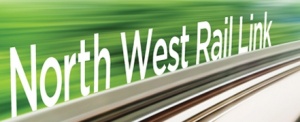Facts and figures about the North West Rail link

The North West Rail Link will use almost 70,000 tonnes of steel – about 20,000 tonnes more than was used on the Sydney Harbour Bridge. The steel will be mostly used to reinforce concrete and to make the railway tracks on the 23km addition to Sydney’s rail network.
The 15.5km long rail tunnels between Epping and Bella Vista will be the deepest and longest rail tunnels ever built in Australia.
400,000 cubic metres of concrete will be used – the equivalent of 200 Olympic swimming pools.
The new line will support more than 16,200 jobs during construction and inject about $25 billion into the NSW economy.
2.4 million cubic metres of spoil, including crushed Sydney Sandstone and shale, will be removed during tunnel and underground station cavern construction – or the equivalent of 1,200 swimming pools.
ADVERTISEMENT
Four tunnel boring machines are planned to build the twin tunnels, travelling at about 120 metres a week, as well as eight roadheaders - double what was needed to build the Epping to Chatswood rail link.
More than 100 excavators, ranging from 5 to 70 tonnes in capacity, are expected to be used across the project.
More than 100 pieces of earthmoving equipment like bulldozers, front end loaders, graders, rollers, scrapers, compactors, water carts and dump trucks will help build the rail link, and about 25 large mobile cranes or crawler cranes.
The first Environmental Impact Statement (EIS) is about 2,200 pages long and in five volumes – bigger than this year’s Sydney residential White Pages (1,600 pages).
Eight new railway stations are planned at Cherrybrook, Castle Hill, Hills Centre, Norwest, Bella Vista, Kellyville, Rouse Hill and Cudgegong Road. 4,000 commuter car parking spaces and a 4km Skytrain from Bella Vista to Rouse Hill

